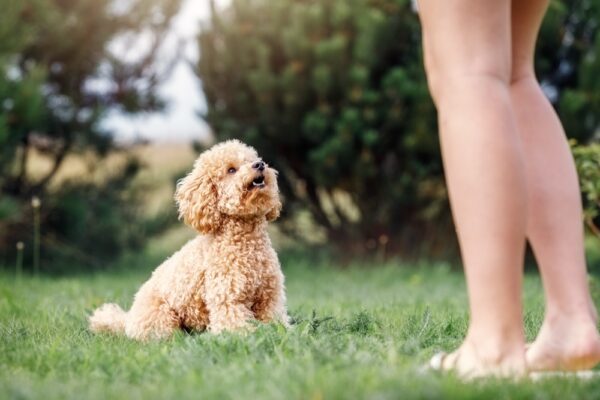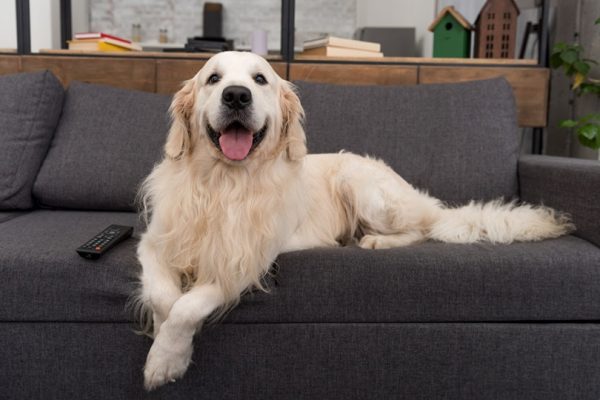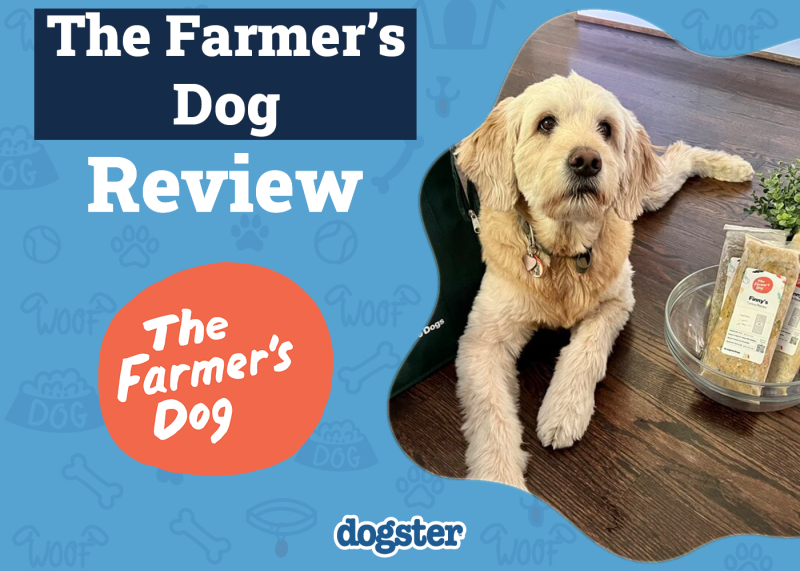In this article
Cavapoos are a relatively new hybrid dog breed that first appeared sometime in the 1990s. They quickly became popular due to their small size, friendly personalities, and easygoing temperaments. Cavapoos are generally referred to as small dogs, but some can grow to become medium-sized dogs, especially if they have a Miniature Poodle or Standard Poodle parent.
It can be tricky to determine healthy sizes and weights of growing Cavapoos because there’s no official standard for their sizes. However, knowing the average growth rates and consulting your veterinarian can help you know if your Cavapoo’s on a healthy growth track.

Cavapoo Breed Overview
Cavapoos are companion dogs that are a cross between a Cavalier King Charles Spaniel and a Poodle. Poodles of any size can breed with a Cavalier King Charles Spaniel to produce Cavapoos. So, Cavapoos can vary in size, come in all kinds of colors, and have various coat markings and patterns. They tend to shed less if their coats more closely resemble a Poodle’s coat, and they can shed moderately if their coats are closer to a Cavalier King Charles Spaniel’s coat.
Cavapoos are often excellent candidates for inexperienced dog owners. They’re intelligent and easy to train, and they’re often patient with children. While they love being the center of attention and are content being the only pet in the home, they can learn to live with other pets.

Cavapoo Size and Growth Chart
Because there aren’t any official standards set for Cavapoo sizes, you can expect more variance in height and weight compared to purebred dogs. Cavapoos with a Toy Poodle parent can end up at a maximum weight of 10 pounds, while Cavapoos with larger Poodle parents can exceed 20 pounds.
Since there’s a wider range of sizes and weights for Cavapoos, it’s especially important to keep your veterinarian involved to ensure your Cavapoo is experiencing healthy growth and development.
| Age | Weight Range | Length Range |
| 1 month | 2–4 lbs. | 4–5 in. |
| 3 months | 5–7 lbs. | 4–6 in. |
| 6 months | 8–10 lbs. | 6–10 in. |
| 10 months | 10–14 lbs. | 7–12 in. |
| 12 months | 10–17 lbs. | 9–15 in. |
| 14 months | 10–25 lbs. | 9–17 in. |
When Does a Cavapoo Stop Growing?
Cavapoos typically become fully mature at around 12 months old, so you can expect your Cavapoo to stop growing after about a year. Keep in mind that your Cavapoo’s growth won’t look linear. Most Cavapoo puppies will experience exponential growth when they’re between 4–7 months old. Then, their growth will slow down and eventually stop when they’re about a year old.
Larger Cavapoos tend to mature a little more slowly than smaller Cavapoos. So, if your Cavapoo is on the larger end, it may continue to keep growing past 12 months and hit the end of its growth at around 13 months. Smaller Cavapoos may stop growing at around 11 months.

Factors Affecting the Size of Cavapoos
A Cavapoo’s size will depend on a wide variety of factors. First, its genetics will play a strong role in its size and appearance. Miniature Poodles and Standard Poodles that breed with Cavalier King Charles Spaniels tend to produce larger puppies, while Toy Poodles can produce toy-sized Cavapoos.
A Cavapoo’s environment can also impact its growth. The quality of its diet, as well as how much it eats, will affect its growth rate. Cavapoo puppies that don’t eat high-quality diets can experience stunted growth or have health issues that can slow down or inhibit their growth and development.
Cavapoo puppies also require plenty of exercises that engage bone, joint, and muscle growth. A lack of physical activity and mental engagement can cause Cavapoo puppies to grow weak or develop behavioral issues like anxiety and depression.
Ideal Diet for Maintaining a Healthy Weight
It’s important to be mindful of your Cavapoo’s diet as it grows. Puppies require specific nutrients that support growth and development,1 so their dietary needs are different from adult dogs. Make sure to feed your Cavapoo puppy high-quality dog food with a puppy formula for about the first year of its life. As your puppy grows and matures to a young adult, you can start to transition it to dog food with an adult formula.
Make sure also to consult your veterinarian to see if your Cavapoo would benefit from a formula specifically made for small dog breeds. Small dogs and large dogs have different nutritional needs. So, if you know that your Cavapoo has a Toy Poodle parent, it may be better suited for a small dog breed formula if it’s on the smaller side.

How to Measure Your Cavapoo
The main tools that you need to measure your Cavapoo’s growth are a tape measure and a pet scale. Cavapoos are relatively easy to train, so it’s very possible to use some treats and other positive training techniques to teach your Cavapoo to sit still on the scale while you measure its height.
Dogs’ heights are measured from the base of their front paws to their shoulder blade. It’s important to measure your Cavapoo’s height while it’s standing because there’s a slight difference in height when it’s sitting. Measuring your Cavapoo while it’s standing will help you get more accurate and consistent numbers.
It may be helpful to enlist the help of a friend or family member to measure your Cavapoo’s height, especially if it doesn’t like to stand still. One person can hold your Cavapoo while the other measures it.

Conclusion
Several different factors can affect your Cavapoo’s full size and weight. Genetics plays an important role, but you can also create a safe and stimulating environment that encourages and supports healthy growth and development. Feeding your Cavapoo high-quality diets and providing plenty of physical exercise and enrichment activities can help keep your Cavapoo on a healthy growth track.
Recording your Cavapoo puppy’s size and weight regularly and consulting your veterinarian can also help ensure that your Cavapoo grows to its full potential.
Featured Image Credit: Kelly Foreman, Shutterstock




















2 Responses
When does a red head cavapoo hair lighten at what age approximately and how much should a one year old weigh
Thanks for your time
Hello Eleanor,
thank you for your question. It is difficult to pinpoint exact age when Cavapoo's colors start to fade, however, Cavapoos become mature around 12 months of age, so you can possibly notice fading colors when getting closer to this age.
Also, as mentioned in the article, Cavapoos should be around 10–17 lbs. in 1 year of age.
Hope this helps.